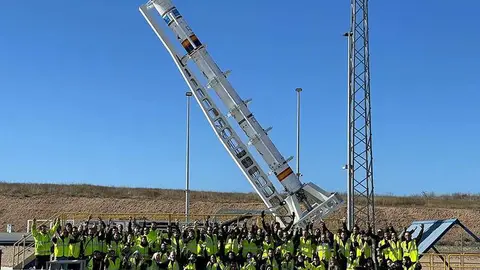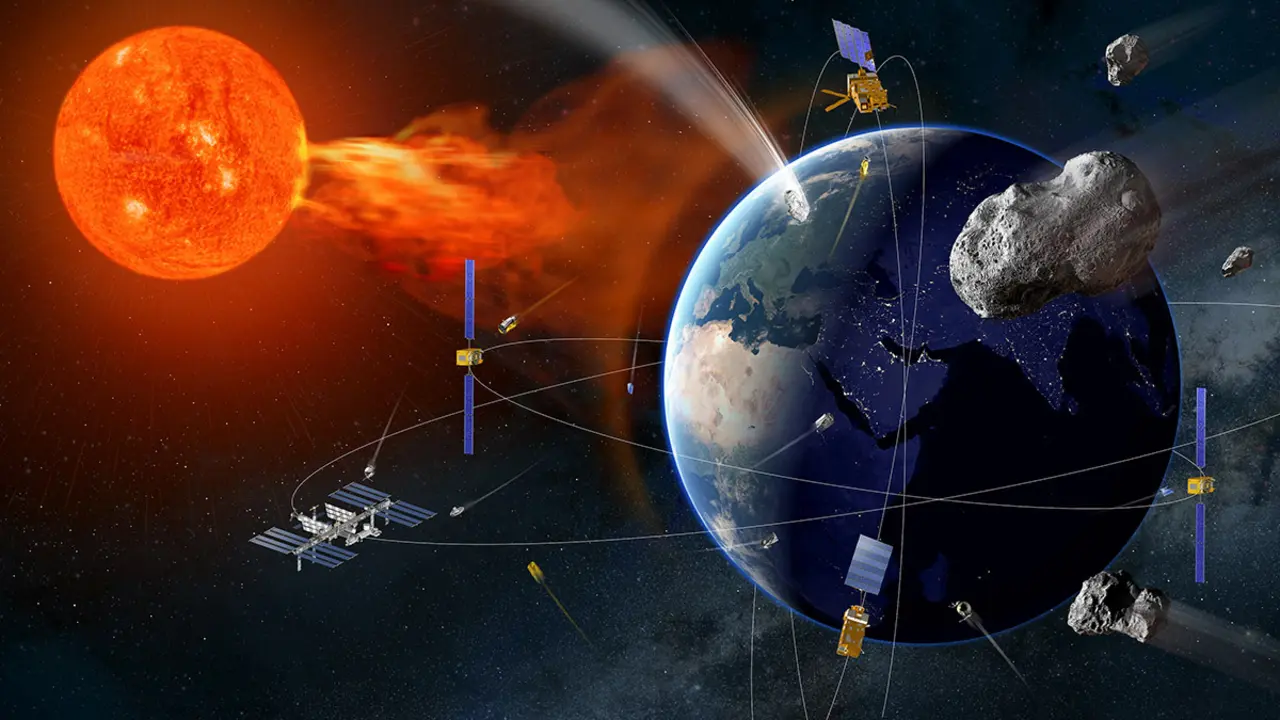The last Ariane 5 in Guyana

Bell and it's over! The time for retirement has come for Ariane 5, the powerful space vector that for 27 years has been called "the workhorse of space Europe".
The successful liftoff of the 117th mission of a heavy launcher designed, developed and built by industries from 12 countries, including Spain, brings to an end more than a quarter of a century of success. It closes the era of prominence of a powerful, huge and complex machine full of high technology, which the European Space Agency's (ESA) director of space transport, the Swiss Daniel Neuenschwander, prefers to call "the spearhead of space Europe".
A member of the generation of the American Atlas II and Delta II launchers born in the 1980s with which it competed, Ariane 5 is already part of astronautical history. Its ascents into space have helped to place hundreds of communications satellites from many different countries into orbit, as well as dozens of probes and space platforms from which to explore the solar system and diagnose the health of the Earth.

The final roar of its engines on 6 July - at 00:00 GMT - has been subject to exhaustive safety measures and checks. Although nothing, absolutely nothing, is left unchecked before the liftoff of any launcher, in the case of Ariane 5's final journey into space, the measures, verifications, checks and tests have been redoubled as this is the mission that brings to a close an important vehicle in the global space transportation system.
ESA, Arianespace, the French launch services company that markets the Ariane 5 and, of course, the French space agency (CNES), which is responsible for administering and managing the Kourou space base in French Guiana, have resolved each of the issues that have arisen over the past few days. Kourou's director, engineer Marie-Anne Claire, had instructed that any problems, however small, should be resolved "with all the patience in the world" to prevent any major mishaps.

A disastrous maiden flight
The Ariane 5's track record has had very few blemishes, but its career got off to a very bad start. The maiden flight on 4 June 1986 exploded within 40 seconds of lifting off the ground. It was carrying four ESA Cluster space probes to study the Earth's magnetosphere. They were blown to smithereens. The investigation determined that the total loss of the guidance system hardware proved lethal.
Its return to service was delayed for 17 months. When it did so on 30 October 1997, it again had major failures, so the third attempt was not made until a year later. Between April 2003 and December 2017, it flew 83 consecutive successful missions, although in January 2018 it had a partial failure, placing the three satellites it was carrying into an improper orbit. In total, Ariane 5 has enjoyed a high reliability rate of 95.7%.
In the 27 years it has been in service, it has lifted off from its single launch pad at the Kourou space base a total of 117 times. It has been used to launch 239 satellites into orbit, mostly to carry two heavy spacecraft, with a maximum payload capacity of 10.5 tonnes.

So what comes next, and what is its successor? Ariane 6, of course. However, its maiden flight has been delayed for more than three years and is currently scheduled for the end of 2023. This has been reiterated time and again by ESA's director general, Austrian Josef Aschbacher, and by the presidents of Arianespace and CNES, Frenchmen Stéphane Israël and Philippe Baptiste, respectively.
However, several of the most important systems that make up Ariane 6 are still in the qualification phase. Programme insiders say it is "unlikely" to fly this year and anticipate the announcement of a further delay to 2024.
The Ariane 5's farewell thus ushers in an uncertain period that undermines and calls into question the longed-for European autonomy of access to space that all the presidents of the French Republic have continuously called for. This is not only due to the termination of Ariane 5 launches, but also to the suspension of flights of the smaller Vega and Vega-C rockets, which means that there are no launch operations at the Kourou space base.

Germany and France on the closing mission
The final mission of Ariane 5, whose official nomenclature is VA261 (Vol Ariane 261), is reserved for the European Union's two major space powers, France and Germany. On its final journey, the reliable European vector has launched two military communications satellites into geostationary orbit at an altitude of 36,000 kilometres.
One is owned by France's Directorate-General for Armaments (DGA), accompanied by a second "experimental and intelligent" platform from the German Aerospace Agency (DLR). The latter has been named Heinrich Hertz after the German physicist of the same name. Hertz discovered the photoelectric effect and the propagation of electromagnetic waves towards the end of the 19th century and is therefore considered the father of telecommunications.

Built by the German company OHB at its headquarters in Bremen, with a take-off weight of 3.4 tonnes and funded by the Federal Ministries of Economic Affairs and Climate Action and Defence, Hertz's raison d'être is to technically evaluate hardware and new software technology for on-board reprogramming of digital signals.
Equipped with the ability to identify and circumvent interference, it will conduct tests in different scenarios to validate the transmission and reception of secure military satellite communications. In doing so, Chancellor Scholz's Berlin government is seeking to pave the way for its space industry to demand broadband, high-data-rate communications satellite models that meet the growing demands of Bundeswehr users.

Heinrich Hertz's travelling companion was another device dedicated to similar tasks: the French military encrypted communications satellite Syracuse 4B, which was built in Toulouse by Airbus Defence and Space, with technological input from the Franco-Italian company Thales Alenia Space.
At 3.5 tonnes, Syracuse 4B has been built to extend the French armed forces' X- and Ka-band encrypted and secure communications coverage. It will do so alongside its sibling Syracuse 4A, which has been in orbit since October 2021. The two will overlap the service and then take over from the 3.7-tonne Syracuse 3A and 3B, in space since October 2005 and August 2006, respectively.











